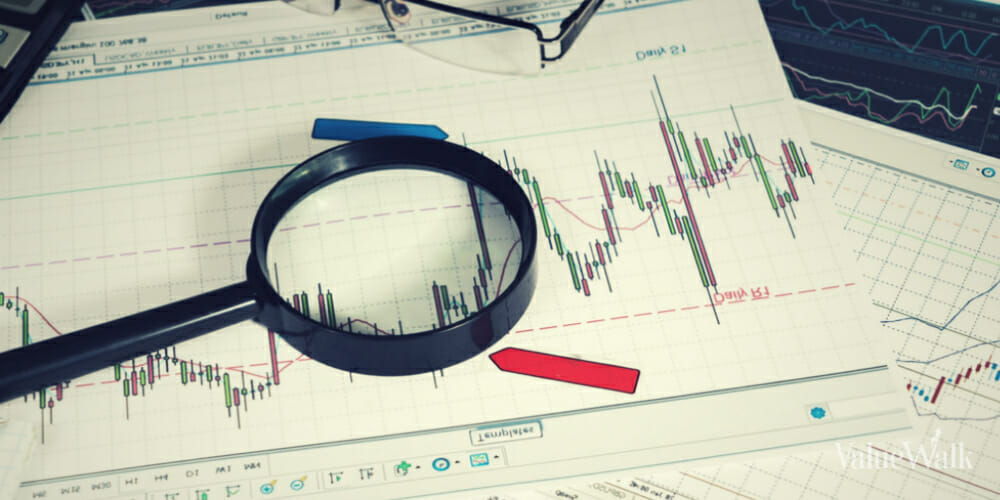Euclidean Q1 Letter
Also see
2017 Hedge Fund Letters
With the recent election and markets moving to ever more-expensive highs, there are a number of salient stories in the air. It is worthwhile to reflect on how these and other stories impact the way investors think and influence their investment decision making. Doing so highlights the logic of adhering to a systematic process for purchasing good companies at discounted prices.

Several recent books have generated widespread discussion around the power of stories and the limitations of our intuition as we process the ones around us. Michael Lewis’ Undoing Project tells the story of two pioneering behavioral psychologists, Daniel Kahneman and Amos Tversky, who categorized dozens of mental glitches that cause people to repeatedly and predictably make bad decisions. Jonathan Gottschall’s Storytelling Animal explores how people rely on stories to simulate different approaches to life’s big problems. And, Yuval Harari’s Sapiens provides a compelling thesis that the emergence of imagination and story-telling enabled our species to dominate the earth.
When you digest these books, it’s clear that there have been evolutionary benefits to developing the skill to tell and seek stories. They allow us to simulate potential futures in our brains and plan our actions, navigating our lives like a great chess player navigates a match. They also enable us to tell high-resolution stories to others, influence their views, and build affinity around imagined concepts such as laws, myths, and culture. This quality, argues Harari in Sapiens, allowed our Homo sapiens ancestors to coordinate action across complex societies and wield a collective force that brought other humanoid species to extinction. It wasn’t our muscles, but our storytelling and story-seeking, that solidified our domination of the planet.
And yet, despite this power and legacy, our attraction to stories left us with serious baggage. Namely, we are wired to embrace a good story, even when it is untrue. We latch onto the tales that are most easily processed in our brains, which are often ones that confirm what we already believe and resemble what we have recently seen. Thus, people are susceptible to lazy thinking, with a tendency to ignore statistical evidence that may contradict their views and yield better long-term decisions.
We would like to provide some examples of how this can be dangerous for investors. Then, we explain how we limit Euclidean’s exposure to stories’ negative consequences by grounding our investment approach in a detailed analysis of what has been fruitful over the long-term.
The Availability Heuristic & Answering Easier Questions
People have a strong tendency to make decisions based on the stories that most quickly and easily come to mind. Often, this kind of mental shortcut gives decent answers. But in complex situations, it often causes decisions to hinge on feelings of like and dislike, with little consideration of available statistics.
From an investment perspective, this can be financially slimming. Difficult questions such as, “Is ACME Corporation attractively priced?” can be subconsciously substituted with questions relating to the moment’s dominant stories, such as, “How do I feel about ACME Corporation, its CEO and its products?” or “How excited or fearful am I about the world right now?”

These easier-to-answer questions are susceptible to making an investor feel better about investments surrounded by enthusiasm (and enthusiastic prices) and worse about opportunities created by fear and pessimism. But, of course, such an instinct is the opposite of what often leads to good investment returns, namely buying when others are fearful and selling when others are greedy.
Confirmation Bias
The double-whammy with this inclination to unknowingly substitute hard questions for easier ones, is that once people form an opinion, they are wired to fortify it like a castle. People favor news that supports their opinions and prefer spending time with people that share their views. Likewise, they tend to avoid and discount information that might challenge their beliefs. This tendency is often called “confirmation bias.”
Why would this quality have survived across the evolutionary process that made humans what we are today? Evolution is supposed to pass on genes that are helpful to survival! Shouldn’t confirmation bias eventually have disappeared as our human software was progressively refined around making great decisions based on all available information? Perhaps the following perspective, from the cognitive scientists Hugo Mercier and Dan Sperber, explains why this question is naive.
“Humans’ biggest advantage over other species is our ability to cooperate. Cooperation is difficult to establish and almost as difficult to sustain. For any individual, freeloading is always the best course of action. Reason developed not to enable us to solve abstract, logical problems or even to help us draw conclusions from unfamiliar data; rather, it developed to resolve the problems posed by living in collaborative groups.” [1]
This makes sense. For example, if you lived in 16th century Italy, you might be more successful in school and in life if you embraced the idea that the world was flat. To challenge accepted wisdom (“the world is not flat!”) might get you excommunicated, or worse. There is always some safety that comes from sticking with the crowd. And, if you are wrong, well, there is comfort in having been wrong with company.
However, in the world of investing, we want to succeed, and the comfort of failing conventionally is bittersweet at best. So, as one seeks neglected, or misunderstood, opportunities that are favorably priced, it is hard to imagine a more severe design flaw than confirmation bias. In the public markets, outside of inside information and fast trading capabilities, generating exceptional returns requires contrarian views formed through better analysis of the facts, and the conviction to sustain those views despite overwhelming pressure to conform to the crowd.
It is therefore crucial to protect against both our ingrained difficulty seeing what we do not want to see, and our great ease embracing further what we already believe.
Recency Bias
Right up there with embracing stories that confirm existing beliefs is our tendency to expect whatever we have recently encountered to persist in the future. When things are going well, we tend to expect them to continue going well. The flip side is also true.
“A person who has experienced a tragedy will overestimate the potential for risk, danger, and a hostile universe. A person untroubled by suffering will underestimate pending danger. When a friend gets cancer we get a check-up. When nobody we know gets cancer we ignore the risk.” [2]
Right now, with markets and growth stocks having been so strong for so long, investors are wired to expect things to continue on their current course. But, markets are forever cyclical. Long-periods of strong results tend to be followed by poor returns and vice-versa.

Recency bias can be a big reason that investors tend buy at highs, and sell at lows. It blinds investors to the fact that companies’ margins and market multiples tend to revert back towards long-term averages over time.
The Power of Statistics and Rule-Based Approaches
People’s tendencies to make decisions based on the examples that most easily come to mind, and particularly those examples that confirm what they already believe or resemble what they have recently seen, are just a sampling of the various mental glitches that can lead to bad decisions.
This is why, in many fields characterized by high degrees of uncertainty, statistical formulas have been shown to provide better predictions than not only people in general, but also better than collections of experts. Daniel Kahnemans’ book Thinking Fast and Slow explains how this has been true in a wide range of fields, from estimating the likelihood that a convict will violate parole all the way to whether a candidate will have success in pilot training.
A favorite example, cited in his book, involved predicting the quality of top Bordeaux wines. These wines, meant for aging, do not develop their taste until years after they have been bottled and this makes them difficult to assess upon initial release. Wine collectors have traditionally turned to experts who, after tasting from the barrel and reviewing the vintage’s growing conditions, opine on whether a new wine looks likely to be extraordinary or something less so.
“But, then, in the Eighties, an economist and wine enthusiast named Orley Ashenfelter thought he could do better, with an algorithm. If you’re interested, the algorithm was: ? price = -12.15 + (?1 * Winter rainfall) + (?2 * Average summer temperature) + (?3 * Harvest rainfall) + (?4 * Age of Vintage). Pundits were furious and appalled: Robert M Parker, America’s best-known wine expert, called it “ludicrous and absurd.” But it wildly outperformed even the best expert predictions.” [3]
You can observe the same power of simple formulas in the world of equity investing. For example, there is extensive evidence that selecting portfolios of companies that that are inexpensive in relation to their fundamentals (earnings, sales, book values, etc.) would have yielded better long-term results than owning the market as a whole. Why might this be?
Well, the same human biases discussed in this letter (and many more) can create illogical market prices. To get excited by recent gains or depressed by recent losses is a natural human tendency. To extrapolate recent events into the future and to seek comfort through ‘expert’ opinions and the herd are also very natural human tendencies. These tendencies, however, are not aligned with the sound principles of buying low and selling high.
A formula for buying inexpensive companies is simply a means to benefit when other investors’ behavioral biases periodically allow a good company to be offered for too low a price.
How Is This Relevant Today?
Two stories that equity investors currently embrace are reflected in these facts:
- Americans’ expectations that stocks will keep rising are at a 17-year high. They haven’t been this bullish since January 2000. [4]
- Investors favored passive over active strategies by a record margin in 2016. [5]
The stories might be summarized as stocks are going up and passive investing is the way to go. In what ways might these stories be driven by behavioral biases and be missing some important statistical context about the state of the market?
One observation is this bullishness and the growing consensus around the merits of passive investing come after 7 years of mostly straight up markets. Despite the markets having become very expensive in relation to corporate earnings, investors apparently feel comfortable extrapolating what has recently occurred into the future.
But, the patterns of history suggest this comfort will not be long-lived. Previous market cycles show that the time to be bullish is after a market, sector or a stock has made a big decline, not a long advance. Remember January 2000 when investors were very bullish and March 2009 when investors were collectively terrified? The human mind apparently has some quirky wiring that, in environments characterized by reversion to the mean, often points in the wrong direction.
A similar blindness may be reflected in the current consensus around the merits of passive investing. True, active managers as a whole will underperform the average market return by the amount of their fees. But, the relative success of passive vs. active investing has been cyclical (take a look at this chart). During times such as now and the late 1990s, when markets steadily increased and many companies became very expensive, active managers have looked really bad. Perhaps it is because many active managers, being sensitive to companies’ intrinsic values, are unwilling to hold companies that are very expensive in relation to fundamentals or, as is the case with market-cap weighted indexes, to blindly overweight them.
We anticipate that, during the years ahead, it won’t prove smart to be highly allocated to the most expensive companies and under allocated to companies that are less expensive in relation to fundamentals. If this occurs, active managers who remain disciplined in their value-orientation may begin to look at lot smarter, at least in relation to the passive strategies currently in vogue.
Back to Euclidean
We formed Euclidean because we believe a systematic approach reduces the risk of counterproductive emotions and biases influencing how we allocate capital. We also believe that it provides an opportunity to profit from a cause-effect relationship that persists across investing history. Namely, the cause being investors’ mistakes created by humans being human and the effect being that good companies are periodically offered at low prices.
We believe that this particular cause-and-effect relationship is a timeless one. Human nature is a powerful force. The effects of human emotion and cognitive biases have been apparent through centuries of financial history, and they can be seen today with domestic valuation spreads as wide as anytime during the past 50 years, other than an extreme peak during the Internet bubble. [6] This spread has widened as growth stocks have steadily advanced while companies that are inexpensive in relation to fundamentals have had muted returns. In the past, these types of environments have consistently ended with big rewards for value-oriented investors who maintained their discipline through the cycle. [7]
Opportunities like this exist because very few investors seem interested or able to maintain the long-term focus and discipline required of value strategies. Therefore, we like Euclidean’s chances. Technology innovation will surprise us, industry structures will change, and regulations will evolve, but the underlying causes we rely on – human biases, loss aversion, recency bias, desire for the comfort of the herd, etc. – are as robust today as they ever were.
The opinions expressed herein are those of Euclidean Technologies Management, LLC (“Euclidean”) and are subject to change without notice. The information provided in this report should not be considered financial advice or a recommendation to purchase or sell any particular security. Euclidean Technologies Management, LLC is an independent investment adviser registered under the Investment Advisers Act of 1940, as amended. Registration does not imply a certain level of skill or training. More information about Euclidean including our investment strategies, fees and objectives can be found in our ADV Part 2, which is available upon request.

We share these numbers because they are easy-to-communicate measures that show the results of our systematic process for buying shares in historically sound companies when their earnings are on sale. [8] [9]
It is important to note that Euclidean uses similar concepts but different measures to assess individual companies as potential investments. Our models look at certain metrics over longer periods and seek to understand their volatility and rate of growth. Our process also makes a series of adjustments to company financial statements that our research has found to more accurately assess results, makes complex trade-offs between measures, and so on. These numbers should, however, give you a sense of what you own as a Euclidean Investor. In general, higher numbers for these measures are more attractive. The key measures are:
- Earnings Yield – This measures how inexpensive a company is in relation to its demonstrated ability to generate cash for its owners. A company with twice the earnings yield as another is half as expensive; therefore, all else being equal, we seek companies with very high Earnings Yields. Earnings Yield reflects a company’s past four-year average earnings before interest and tax, divided by its current enterprise value (enterprise value = market value + debt – cash).
- Return on Capital – This measures how well a company has historically generated cash for its owners in relation to how much capital has been invested (equity and long-term debt) in the business. At its highest level, this measure reflects two important things. First, it is an indicator of whether a company’s business is efficient at deploying capital in a way that generates additional income for its shareholders. Second, it indicates whether management has good discipline in deciding what to do with the cash it generates. For example, all else being equal, companies that overpay for acquisitions, or retain more capital than they can productively deploy, will show lower returns on capital than businesses that do the opposite. Return on Capital reflects a company’s four-year average earnings before interest and tax, divided by its current equity + long-term debt.
- Equity / Assets – This measures how much of a company’s assets can be claimed by its common shareholders versus being claimed by others. High numbers here imply that the company owns a large portion of its figurative “house” and, all else being equal, indicates a better readiness to weather tough times.
- Revenue Growth Rate – This is the annualized rate a company has grown over the past four years.
Euclidean’s Ten Largest Holdings as of march 31, 2017
We provide this information because many of you have expressed an interest in talking through individual positions as a means of better understanding how our investment process seeks value.
We are available to discuss these holdings with you at your convenience. We are happy to explain both why our models have found these companies to be attractive as well as our sense of why the market has been pessimistic about their future prospects.
Euclidean’s ten largest positions as of March 31, 2017 (in alphabetical order) [10]
- Apple – AAPL
- Brocade Communications – BRCD
- PC Connection – CNXN
- Cooper Tire & Rubber– CTB
- Chart Industries – GTLS
- Lear Corporation – LEA
- Insight Enterprises – NSIT
- Teradata Corporation – TDC
- Trinity Industries – TRN
- Western Digital – WDC







